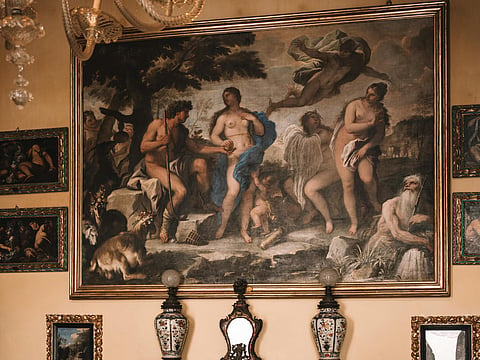
- LIFESTYLE
- FASHION
- FOOD
- ENTERTAINMENT
- EVENTS
- CULTURE
- VIDEOS
- WEB STORIES
- GALLERIES
- GADGETS
- CAR & BIKE
- SOCIETY
- TRAVEL
- NORTH EAST
- INDULGE CONNECT

With our lives become mundane, more and more people are turning to art to bring in some vibrancy and soul in their day. Not all are masters with paints, but they make it a point to appreciate art, and have an eye for good work. One of the major movements in the history of art, whose paintings still mesmerise us today, is Renaissance.
The Renaissance wasn’t just a period of rebirth—it was a full-blown creative revolution. Artists were no longer just painting to please the Church; they were experimenting, observing, and trying to make sense of the world around them. And in doing so, they gave us some of the most iconic painting styles that still shape how we view art today.
One of the first big shifts? Perspective. Before this, most paintings looked flat. But during the early 1400s, artists like Masaccio started playing with linear perspective, making their canvases look like real, three-dimensional spaces. Suddenly, buildings receded into the distance and figures stood in rooms that felt believable.
Then came the magic of chiaroscuro—the use of light and shadow to create drama and depth. Leonardo da Vinci made this technique famous, with shadows that seemed to breathe life into his subjects. For example, the soft shading around Mona Lisa’s face
Italy also became the home of fresco painting—a technique where artists painted directly onto wet plaster. It was unforgiving (you had to get it right before it dried), but the results were stunning. Michelangelo’s Sistine Chapel ceiling is perhaps the most dramatic proof of its power.
Meanwhile, in Northern Europe, oil paint started gaining ground. Artists like Jan van Eyck figured out how to layer oils to create richer colours and immaculate levels of detail—think glowing skin, intricate lace, and reflections in glass. Oil paint gave them time and flexibility, unlike the fast-drying tempera of earlier times.
But maybe the most important shift was in what they painted. With humanism on the rise, artists began turning their gaze away from just the heavens and towards people—real, flawed, emotional people. Portraits, mythological scenes, even ordinary life made its way onto canvases.
The Renaissance gave artists tools, techniques, and the freedom to break the mold. And in doing so, they didn’t just paint history—they changed it.
For more updates, join/follow our WhatsApp, Telegram and YouTube channels.